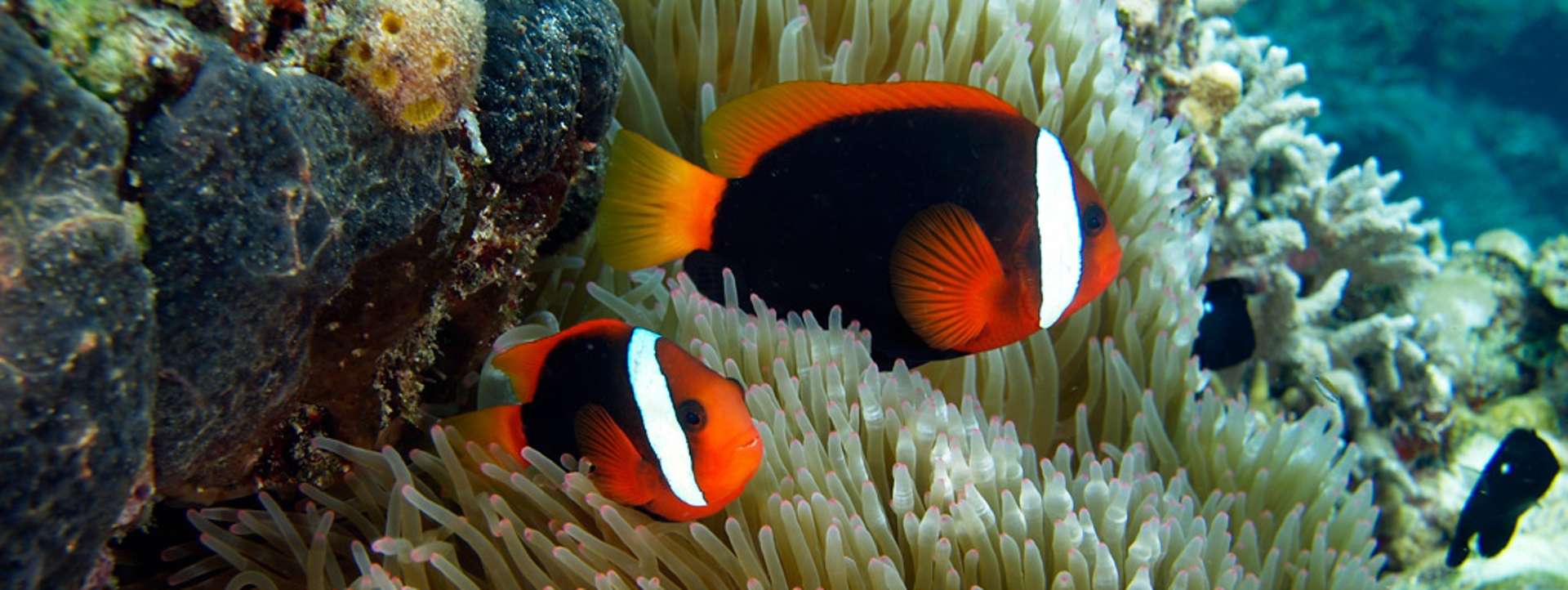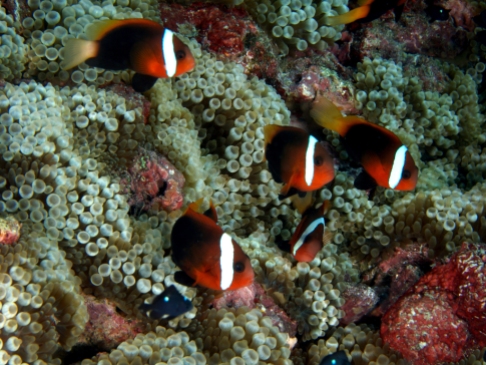Common Name: Cinnamon Anemonefish
Scientific Name: Amphiprion melanopus Bleeker, 1852
Distribution: Indonesia, from Java Sea to Southern Mindanao and probably West Papua
Type Locality: Ambon Island, Molucca Islands, Indonesia
Identification: Single stripe. Ventral fins black. Both sexes with black well-developed along the back and sides.
Similar: Essentially identical to the Micronesian, Melanesian and Samoan Melanopus Anemonefishes, and separated here only because of biogeography. The Australian A. verweyi is typically brighter in color and with the caudal peduncle and posterior anal fin orange (though this varies within the population). The Vanuatu and New Caledonian A. arion is much brighter and has relatively little black along the body, as well as having sexually dichromatic pelvic fins and an orange anal fin.
Notes: The type locality for A. melanopus is Ambon, Indonesia. In general, this species is duller in color than most others in the melanopus group, often having more of a creamy white caudal fin relative to the bright yellow-orange seen elsewhere; however, this is not always true, as more vibrantly colored Indonesian examples have been documented. Consistent phenotypic differences between this species and populations from Micronesia and Melanesia are seemingly non-existent, though it is presumed that genetic data will be more revealing, in keeping with the pattern of speciation seen elsewhere in the genus.
There are many common names for this fish, befitting its somewhat protean appearance. Its somber hues have given it the moniker “Dusky Anemonefish”, as well as the name used here, the “Cinnamon Anemonefish”. It is also occasionally seen listed under the unwieldy sobriquet “Red and Black Anemonefish” and, more prosaically, the “Melanopus Anemonefish”. The scientific name translates as “black foot”, in reference to its dark ventral fins; Amphiprion nigripes shares a similar etymology, but, alas, there can only be one Blackfoot Anemonefish.














